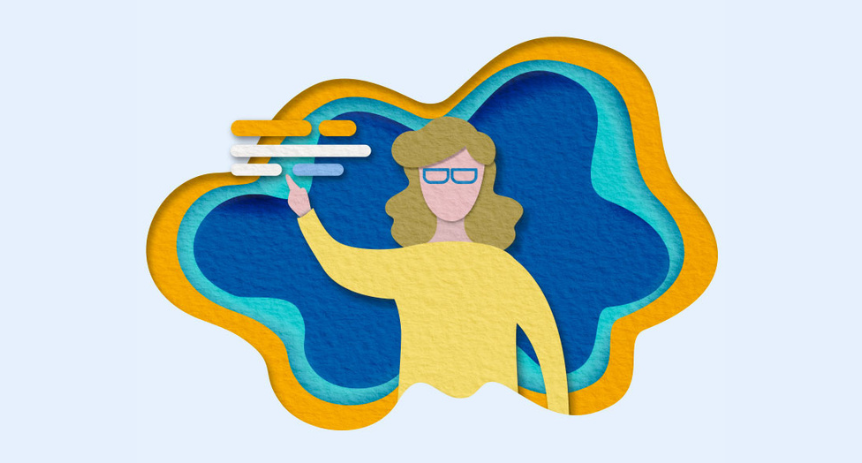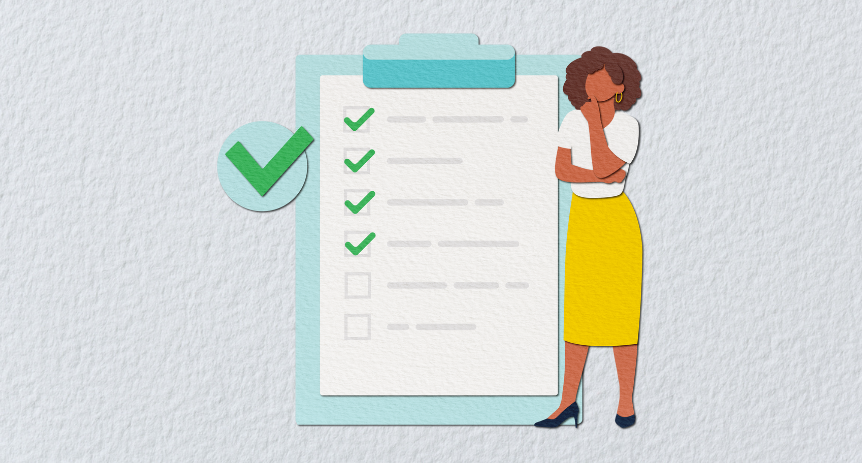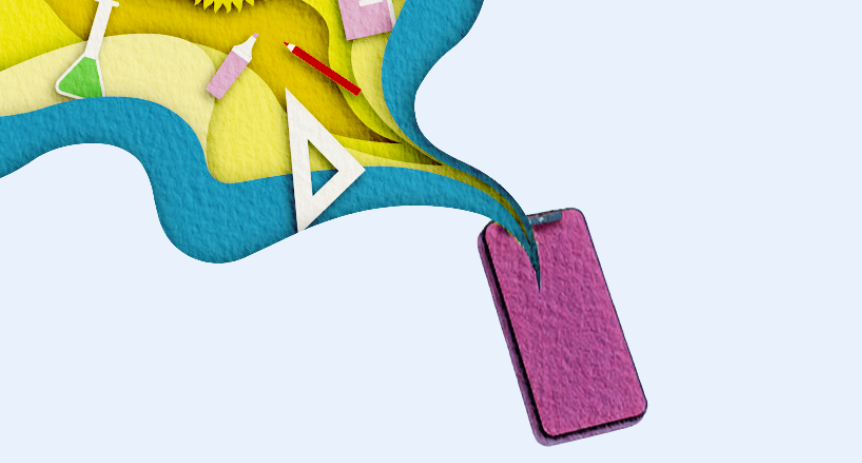Stepping into a classroom as a substitute teacher can be challenging, especially when faced with disruptive behavior. Without the benefit of established relationships that regular teachers might have, maintaining order and command of the classroom can seem like a daunting task. However, with the right strategies and a proactive approach, you can effectively manage classroom behavior and create a constructive learning environment
Luckily, we’ve got practical tips and techniques that every substitute teacher can utilize to handle disruptions and keep students engaged. These insights aim to not only make your day smoother but also enhance the learning experience for your students.
Understanding disruptive student behavior
Disruptive behavior in the classroom can take various forms, ranging from mild interruptions to more severe disturbances. It helps to understand what’s causing the behavior and its impact on the class to be able to manage it effectively.
Common causes of disruptive behavior
Several factors contribute to disruptive student behavior. Common causes include:
- Seeking attention from peers or the teacher
- Boredom due to unengaging material
- A lack of understanding of classroom material
- External stressors from home environments
Students might also exhibit disruptive behavior if they feel misunderstood or undervalued in their environment. Recognizing these triggers is the first step toward addressing and handling disruptive conduct effectively.
Impact of disruptive behavior on the learning environment
Disruptive behavior can impact the whole class. When a student continuously acts out, it can be distracting enough that it leads to lower engagement and performance among other students in the classroom. It’s not only stressful for the teacher, but it can also create anxiety for other students. Addressing disruptive behavior quickly can restore the focus on keeping learning on track.
Essential strategies for managing disruptive behavior
As a substitute teacher, managing disruptive behavior can be particularly challenging, due to the temporary nature of the role and the lack of established relationships with students. However, applying the right strategies can greatly improve classroom control and support more positive student interaction.
Establishing clear expectations from the start
One of the first steps is to establish clear expectations of appropriate behavior from the outset. At the start of class, introduce yourself and briefly outline the rules of the classroom. Make sure the expectations are achievable and clear. Keep the tone positive and encouraging, using language like, “We speak one at a time” instead of “No talking over each other.” Setting a supportive and respectful tone helps prevent behavioral issues before they start.
Building positive relationships with students
Creating a rapport with students is key to managing behavior effectively. When students view their teacher as approachable and fair, they are more likely to respect authority. As a substitute, you can build this rapport quickly by learning and using students’ names, showing interest in their activities, and maintaining a positive demeanor. A smile can go a long way in establishing a friendly atmosphere where students feel valued and understood.
Implementing effective communication techniques
Effective communication is essential when dealing with disruptions. Use clear, concise directives when a disruption occurs, and always strive to remain calm and composed. If a student is disruptive, address the behavior directly and privately, if possible, to avoid escalating the situation. Praise positive behavior in front of the group as reinforcement, which can encourage other students to follow suit. Additionally, actively listen to students’ concerns and feedback. This can provide insights into what may be causing disruptive behaviors and help you to adapt your strategies accordingly.
By understanding the nuances of disruptive behavior and applying these strategic approaches, substitute teachers can better manage classroom dynamics and foster a positive, more productive learning environment.
Practical tips for de-escalating disruptive situations
Remaining calm and composed
When faced with disruptive behavior, it’s paramount that you, as a substitute teacher, maintain your composure. Staying calm not only helps you think more clearly but also sets a more peaceful tone in the classroom. Take deep breaths, keep your voice even and low, and avoid showing visible frustration or anger. By managing your emotions, you provide a model for students to follow, which can often lead them to mirror your composure. Remember, students are more likely to respect and respond positively to an authority figure who appears controlled and measured.
Using non-verbal cues to redirect behavior
Non-verbal communication can be a powerful tool in managing classroom behavior. Simple gestures such as eye contact, facial expressions, and body positioning can convey authority and expectations without disrupting the entire class. For instance, a stern look or positioning yourself near a misbehaving student can signal to them that their behavior is being monitored and is not acceptable. Additionally, subtle positive reinforcement, like nodding or giving a thumbs up, can encourage good behavior from other students without breaking the flow of a lesson.
Implementing consequences consistently
Consistency is important in classroom management, especially as a substitute. Ensure you understand and adhere to the classroom rules set by the regular teacher, and apply them uniformly. If a disruption occurs, immediately follow through with predetermined consequences. These could range from a verbal warning to sending the student to the principal’s office, depending on the severity of the disruption and the school’s policy. Consistent application of rules and consequences not only maintains order but also helps create a sense of fairness and predictability for the students.
Leveraging support systems
Seeking help from the school administration
Don’t hesitate to reach out to the school’s administration when dealing with severe or ongoing disruptive behavior. Administrators can provide essential support, from giving guidance on how to handle specific situations or students to intervening directly if the behavior escalates beyond your control. Knowing when and how to involve them is an important part of managing your classroom effectively and ensuring that you’re upholding the school’s standards of discipline.
Collaborating with fellow teachers for support
Engage other teachers at the school for advice and support. Experienced teachers can offer practical strategies that have worked in their classrooms, warn you of common triggers for disruptive behavior, and suggest effective methods for dealing with difficult students. Building a network with other teachers not only aids in handling immediate behavior issues but also helps in gaining deeper insights into the school’s learning environment, which can be particularly beneficial for a substitute teacher.
Engaging with parents to address behavior concerns
If a student’s behavior is continually disruptive, involving their parents may be necessary. Reach out through a phone call or a scheduled meeting to discuss your observations and concerns. When engaging with parents, be clear about the behavior, but also express your willingness to help their child succeed in your class. Collaboration between you and the families can lead to personalized strategies that address behavioral issues more effectively. It’s important to keep these communications constructive, aiming for a solution that supports the student’s growth and learning.
Next steps
Analyzing situations and applying strategies
When faced with disruptive behavior, be sure to take the time to analyze the situation before reacting. Imagine being a substitute teacher in a middle school math class where a group of students is consistently talking and ignoring your instructions. By approaching this situation with patience and strategic thinking, you can apply several effective methods. First, use proximity: simply moving closer to the disruptive group can often encourage students to focus. Secondly, engage them directly by asking them to explain the problem you’re teaching or to share their thoughts. This shifts their attention back to the subject and gives them a sense of involvement and responsibility.
Reflecting on challenges and finding solutions
Every teaching day won’t be perfect, and not all strategies will succeed on the first try. Reflect on your experiences after each class. Consider what worked well and what didn’t, and think about how you could implement different approaches in the future. For instance, if a quiet reading session didn’t settle a noisy class, perhaps a more interactive or group-based activity would capture their attention better. Finding the right balance often requires experimentation and adaptation—essential qualities for success as a substitute teacher.
Stepping into a classroom as a substitute teacher can pose unique challenges, especially when it comes to dealing with disruptive behavior. By setting clear expectations, remaining composed, and using strategic engagement techniques, you can maintain a positive and engaging learning environment. Remember, every class is a new opportunity to refine your approach. Implementing these suggested strategies not only helps manage behavior effectively but also enhances your overall teaching experience. Stay patient, flexible, and prepared to turn any challenge into a stepping stone for success.






